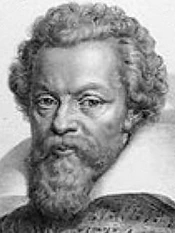The (small) miracle of béchamel sauce

Making a béchamel sauce is going to confront you with a little miracle that happens every time: You pour milk over a roux, it's very liquid, you stir over a low heat, and then all of a sudden, miracle, the sauce sets, it thickens, you've got your béchamel.
Let's see what happened.
Let's see what happened.
8,233 4/5 (4 reviews)
Keywords for this post:SauceMethodPrincipleExplanationStarchTemperatureRouxConsistencyBéchamelLast modified on: August 27th 2024
The (small) miracle of béchamel sauce
A basic sauce

Making it is quite simple: first a "roux" mixture of flour and butter, which is heated and colored (hence its name).

Once the roux has reached the right color, cold milk is added, the mixture is very liquid, and you continue to cook and stir over low heat until it thickens (you'll find the full recipe here).
But why does it thicken? As you'd expect, there's no magic involved, just a little physics and chemistry.
Flour and starch
The secret lies in the roux's flour, which contains grains of starch, a complex sugar made up of glucose molecules rolled up into tiny little balls.
It's around 70°C that the magic happens: the grains of starch in the flour break up into smaller grains, starch molecules that begin to absorb the milk around them, up to 20 times their volume, thus increasing the sauce's viscosity.
This process, known as starch gelatinization, takes place between 70°C and 85°C, giving béchamel its characteristic thick, creamy consistency.
Note in passing that this process of starch gelatinization is also at work in, among other things, crème pâtissière or flan, where flour is often replaced by maïzena, a corn starch.
In short: Béchamel thickens because it contains flour that is heated, causing its starch grains to burst and absorb the milk around them.
So béchamel is not just a culinary classic, it's also a little chemistry lesson in action.
Lasts posts
The importance of sieving
In recipes that use a fine powder (flour, powdered sugar, etc.), you'll often see the advice to sift before using it. To sift is to pass the powder in question through a sieve (a very fine strainer) before incorporating it into your recipe. It's often advice, but is it really useful?September 3rd 20256,5223
The grease spray
As soon as you have something in a recipe that sticks to the mold, the question always arises as to how difficult it is to remove from the mold. There's nothing more frustrating than breaking your cake when unmolding it, because part of it has stuck in the mold. The classic way to avoid this is...August 26th 20255,9315
Cake moulds
When we make a cake, or a cake of the same rectangular shape, we usually take out our usual mould and tell ourselves that the recipe is anyway "for a cake", but is it really that simple?August 25th 20256,1465
Thinning out herbs
If you need to add a long-stemmed herb (tarragon, mint, verbena, thyme, etc.) to a recipe, you'll probably only need the leaves and not the stem, so you'll need to remove the leaves. Leaf removal means keeping only the beautiful leaves, and eliminating the ugly stems and leaves, but how do you do...August 8th 20254,3265
Add a bay leaf
Bay leaf: small in size, but big in flavor. You'll find it in hundreds of recipes, and it's often added to cooking meat, in a sauce or broth, usually accompanied by other herbs or products. It's a staple of Provençal, Mediterranean and Oriental cuisine, but not the only one. Usually, in a...July 31th 20254,3515
Other pages you may also like
The importance of sieving
In recipes that use a fine powder (flour, powdered sugar, etc.), you'll often see the advice to sift before using it. To sift is to pass the powder in question through a sieve (a very fine strainer) before incorporating it into your recipe. It's often advice, but is it really useful?September 3rd 20256,5223
The 3 essential knives
You must have heard a chef or cook say: "There’s no good cooking without good ingredients". This is very true, of course, but for any amateur or beginner it is equipment that really counts to start with. What I mean is that you should not skimp on kitchen equipment, good utensils, a food...May 30th 201824 K5
Drawing a pattern in pastry
Often in the kitchen, in pastry-making, or in baking, we need to trace a pattern on a pastry. It's just a question of aesthetics but it has its effect after baking on a galette, pithiviers, pâté en croute (terrine in a pie crust), etc.May 23th 201934 K4.1
Candied fruits: don't get ripped off
Do you like candied fruit? You might like to nibble a handful or add it to a recipe, like a classic fruit cake or delicious Italian specialities like panettone or sicilian epiphany pie.June 21th 201765 K 24.2
Your oven in "proofer" mode
In the bakery, proofing is a crucial stage in the process of making light, plump breads and pastries. During proofing, the yeast ferments the sugars present in the dough, releasing carbon dioxide which forms bubbles. This process allows the dough to swell and aerate, guaranteeing a soft, light...September 27th 20249,4625
Post a comment or question
Follow this page
If you are interested in this page, you can "follow" it, by entering your email address here. You will then receive a notification immediately each time the page is modified or a new comment is added. Please note that you will need to confirm this following.
Note: We'll never share your e-mail address with anyone else.
Alternatively: you can subscribe to the mailing list of cooling-ez.com , you will receive a e-mail for each new recipe published on the site.








